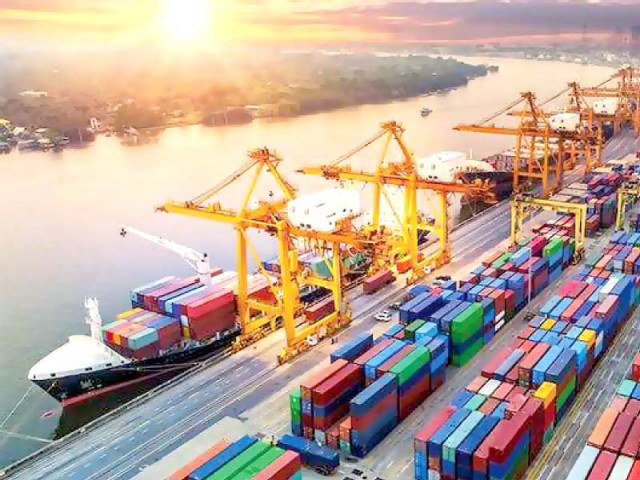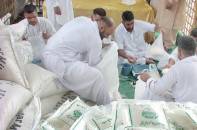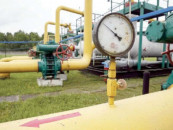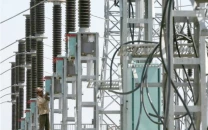From trade resilience to sustainability
Improved current account, forex reserves provides room to boost investment, exports

Statistics of trade, exports and imports, as well as manufacturing activities in Pakistan speak volumes about the revival of national economy at a time when the pandemic is raging throughout the world.
Although the number of confirmed Covid-19 cases in Pakistan is closing in on the one million mark and deaths surpassing 22,000, the measures undertaken by various government agencies to revive the economy post-lockdown in March 2020 ensure that the economy is able to cope with the challenges. Pakistan experienced a revival in its trade figures in FY21.
Exports, at $25.3 billion in FY21, were 18.1% higher and imports, at $56.3 billion, were 26.4% higher than the values reported for FY20.
Exports in June 2021 touched $2.7 billion, a 61.1% increase from the value reported for May 2021. This neutralised the adverse impact of the challenges due to limited activity in May 2021.
The trade deficit, at $31.1 billion, was 34.1% higher than the value reported for the previous fiscal year. Although the pandemic helped in curtailing the trade deficit to $23.2 billion in FY20, the higher growth rate of imports relative to exports has increased it back to the level reported at the end of FY19.
Pakistan was facing a balance of payments crisis, largely driven by the imbalances between exports and imports in FY19. However, currently the rising trade deficit has yet to be reflected in the current account balance.
The current account balance, reported by the State Bank of Pakistan (SBP), had been in surplus for the first three quarters of FY21. This was primarily powered by the sharp increase in remittances, which in 2020 were $3.7 billion more than those reported for 2019.
Furthermore, the deficit in the balance of goods, services and primary income, as reported by the SBP, was $4.4 billion lower in 2020 relative to 2019.
Total liquid foreign exchange reserves reported on July 2, 2021 were at $24.4 billion. Net reserves with the SBP were up by $800 million between June 25, 2021 and July 2, 2021.
In essence, the rising trade deficit is not currently translating into a current account deficit. The risk of a balance of payments crisis to the extent seen in 2018-19 is relatively lower.
With real effective exchange rate at 102.3 in May 2021 and nominal exchange rate of Pakistani rupee to the US dollar rising to 159 in mid-July compared to 154 at the end of May, the government does not reveal a preference to adopt a policy to overvalue the currency as the net foreign exchange reserves increase.
The overvaluation of the currency often leads to speculative attacks on the currency that can often be devastating for the economy.
The improved position in the current account balance and the net foreign exchange reserves provides critical space for the economic policymakers to further promote productive investments that boost exports and make them sustainable.
However, the challenge continues for the policymakers as they negotiate with the International Monetary Fund (IMF) for the provision of much-needed financing facilities in exchange for the likely unfavourable economic reforms and tougher fiscal management.
Trade data breakdown
International Trade Centre’s Trademap.org reports trade figures for each calendar year. Exports from Pakistan, at $22.2 billion in 2020, decreased by $1.6 billion from the value reported for 2019.
Exports from Pakistan to its major trading partners such as the European Union bloc (including the UK) and China decreased, but exports to the US increased in 2020.
Within EU, exports to the UK, Germany and the Netherlands increased, while exports to Italy, Spain and France decreased.
Exports to the UAE also decreased. Interestingly, exports to Afghanistan decreased by 25% in 2020 relative to 2019, which could be attributed to the closure of border between the two countries and the increasingly volatile political situation in Afghanistan.
Considering the products, there was a 5% growth in exports of textile made-up articles, driven by worn clothing, clothing accessories and tents of textile material.
There was a 1% growth in exports of knitted articles of clothing, powered by jerseys and pullovers as well as gloves, mitts and mittens.
Imports into Pakistan decreased by 9% to $45.8 billion in 2020. The biggest decline was seen in imports from Gulf countries.
Imports from the UAE declined by 29%, imports from Saudi Arabia dropped by 22% and imports from Qatar decreased by 32%. This decline was primarily caused by the reduction in prices and demand for mineral fuel.
On the other hand, imports from China, Malaysia and Indonesia increased.
Considering the imports of products, imports of mineral fuel declined by 28%, imports of machinery and mechanical appliances decreased by 14% and imports of organic chemicals fell by 10%.
On the other hand, imports of cotton increased by 67%, imports of electrical machinery and equipment increased by 7% and imports of animal and vegetable fats and oil increased by 16%. The Large Scale Manufacturing Index, as reported by the PBS, has shown an upward trend.
Textile sector grew by 4% between July 2020 and May 2021 year-on-year. There is a recovery in the automobile sector, which will likely continue with the new auto policy.
The overall Business Confidence Index, published by the SBP in collaboration with the IBA Karachi, indicates positive sentiment. In essence, Pakistan’s economy has performed well despite the pandemic.
The challenge now is to ensure this performance remains sustainable as vaccinations aid global economic recovery.
The writer is the Assistant Professor of Economics & Research Fellow at CBER, IBA
Published in The Express Tribune, July 19th, 2021.
Like Business on Facebook, follow @TribuneBiz on Twitter to stay informed and join in the conversation.



















COMMENTS
Comments are moderated and generally will be posted if they are on-topic and not abusive.
For more information, please see our Comments FAQ